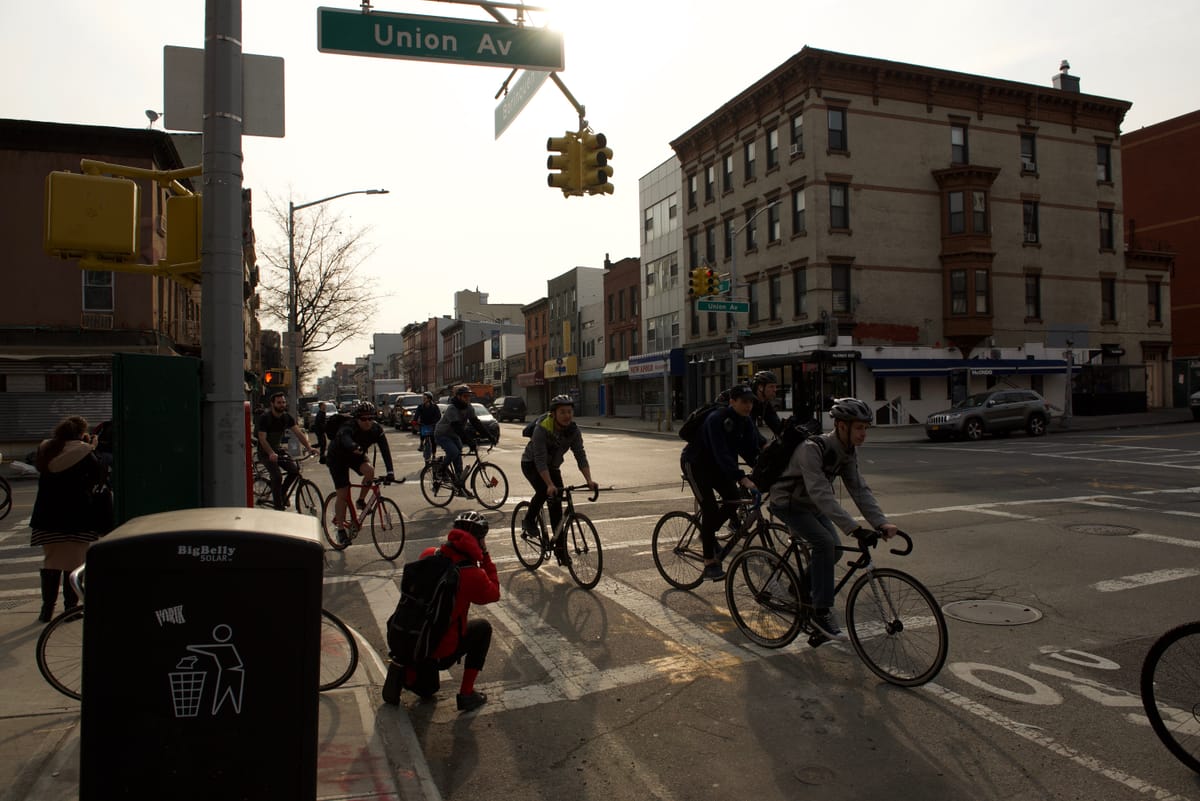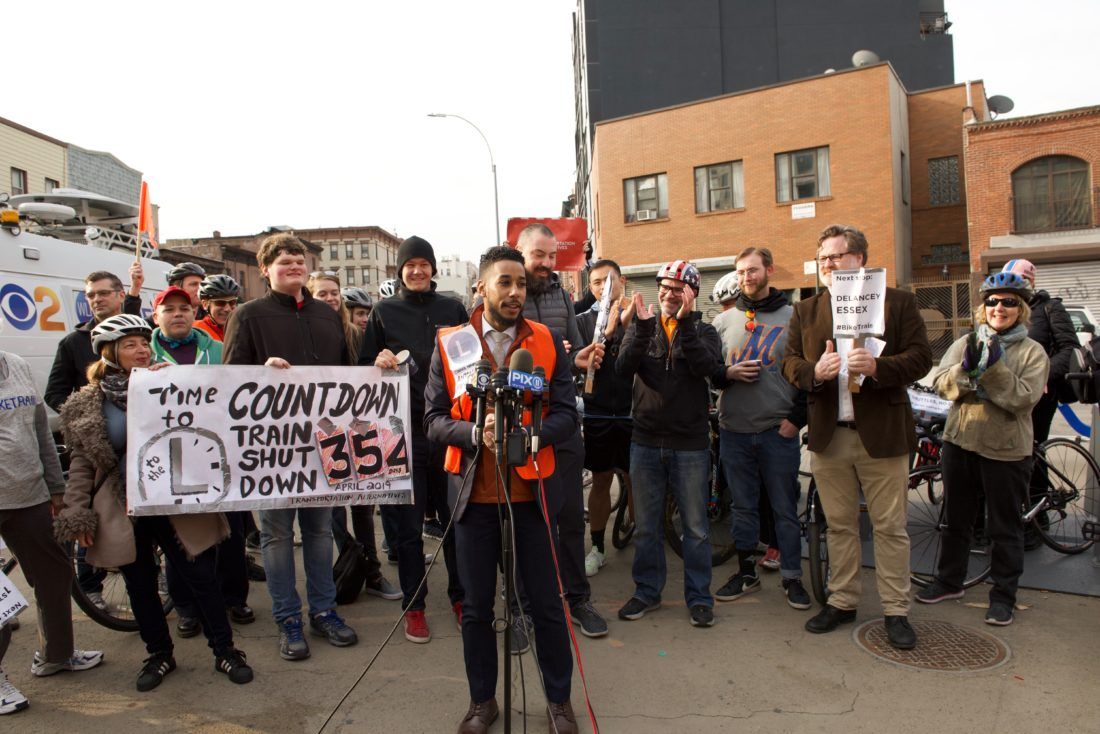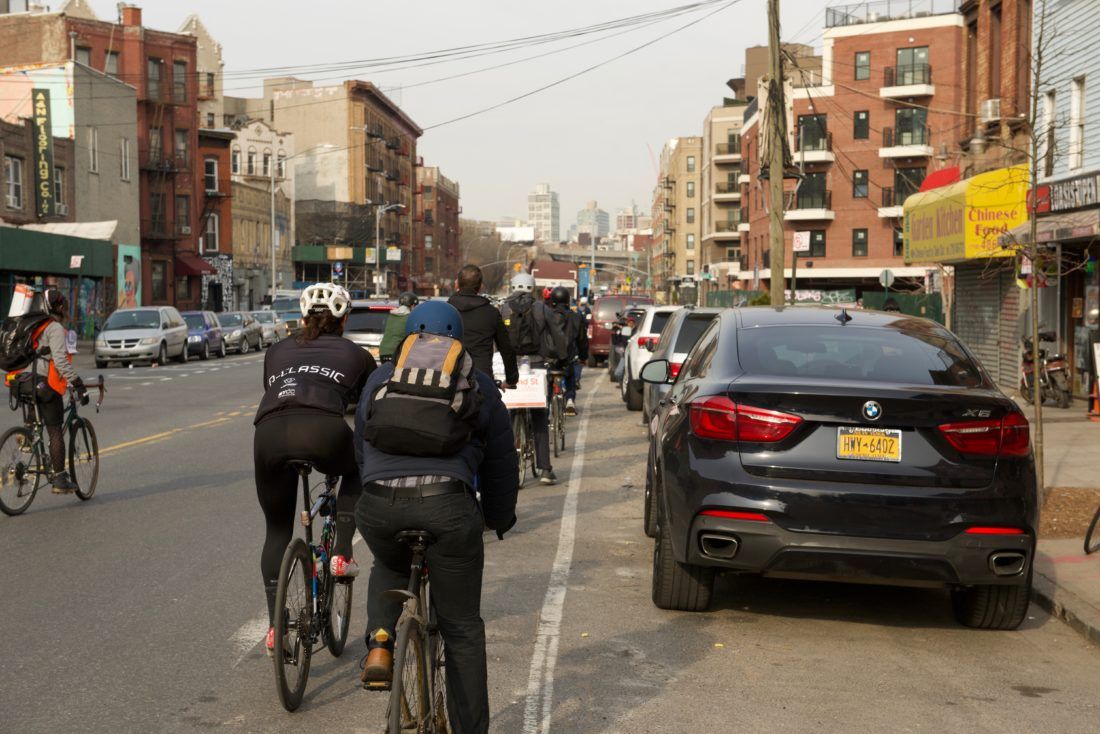Inaugural “Bike Train” Commute Takes Off From Williamsburg


WILLIAMSBURG – At the corner of Hope and Union this morning, about 30 cyclists gathered at 8:00 am, drinking coffee and listening to music on a portable speaker before their commute. The group was preparing to make their way into Manhattan, bicycling across the Williamsburg Bridge as part of a “Bike Train,” an alternate commute raising awareness about next year’s L train shutdown.
The group commute will continue weekly through the L train shutdown to encourage new riders to join in an alternate mode of transportation. Around 250,000 commuters rely on the L train to carry them between Brooklyn and Manhattan each day, and come April 2019, they’ll need to find another way across.
Mostly made up of Brooklynites, with a smattering of Manhattan-based supporters, the bike train crew was composed of transit activists, business commuters and students ready to start their day. The plan was to ride in a group following “conductors” bedecked in orange safety vests, who would call out “stops” along the way. Signs calling for Grand Street and 14th Street “people-ways,” were visible, along with “I Used To Ride The L Train” signs. A little premature, perhaps, as there are still 12 months of viable service before the shutdown, but the point was well made.

“We all know what’s coming,” said Councilmember Antonio Reynoso (D-34), who was riding in solidarity with the group. “We need to make sure we have the infrastructure to navigate safely and respectfully—and we need it sooner than the day before the shutdown.”
Calling biking “the most viable alternative” for the transit disruption, Reynoso focused on big-picture changes that alternative transportation infrastructure could have even after the shutdown.
“We need to break car culture,” he said. “We need to bring in bike culture and bus culture and pedestrian culture.”
Reynoso congratulated the DOT on some of their planning and work for protected bike lanes and bus-only lanes for the shutdown, but did mention that changes had only come recently. The DOT began unveiling plans earlier this year, just after a rally held by local politicians calling on the MTA and DOT to do more in the face of the shutdown.
A sign counted down the 364 days left until the L train closure, which Transportation Alternative’s Luke Ohlson said will cause a 300% in bike traffic.
“We need to pursue these alternatives to make it safe and fun to get to work,” said Ohlson. “Get involved—we’re a year away and we need to advocate!”
A little before 9:00 am, the thirty-something riders buckled on their helmets and mounted up on bikes ranging from racing models to big CitiBikes, ready to roll. Striking out down Union to make the turn onto Grand Street, things were going smoothly—for about 50 yards.
Just before the corner, a double-parked sedan outside a corner store blocked the entirety of the bike lane. Riders piled up, waiting patiently for the light to change and traffic to clear around the car. It was an immediate reminder of how enforcement, car culture and infrastructure need to come to together in making New York a better city for alternate transportation—especially with the MTA in a constant state of delay and disrepair.
One black town car is certainly not the last obstacle bicyclists will have to navigate in the ongoing saga of New York transit—hopefully, the rest prove as easy to maneuver by.




